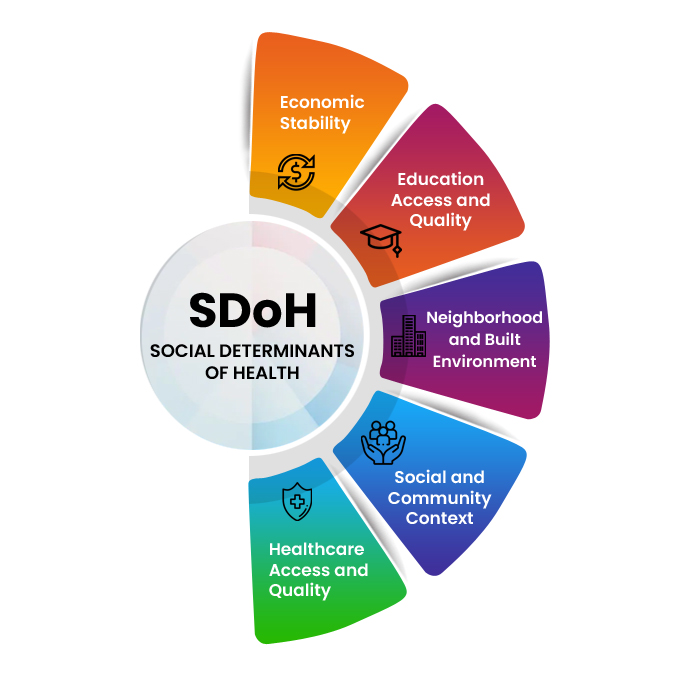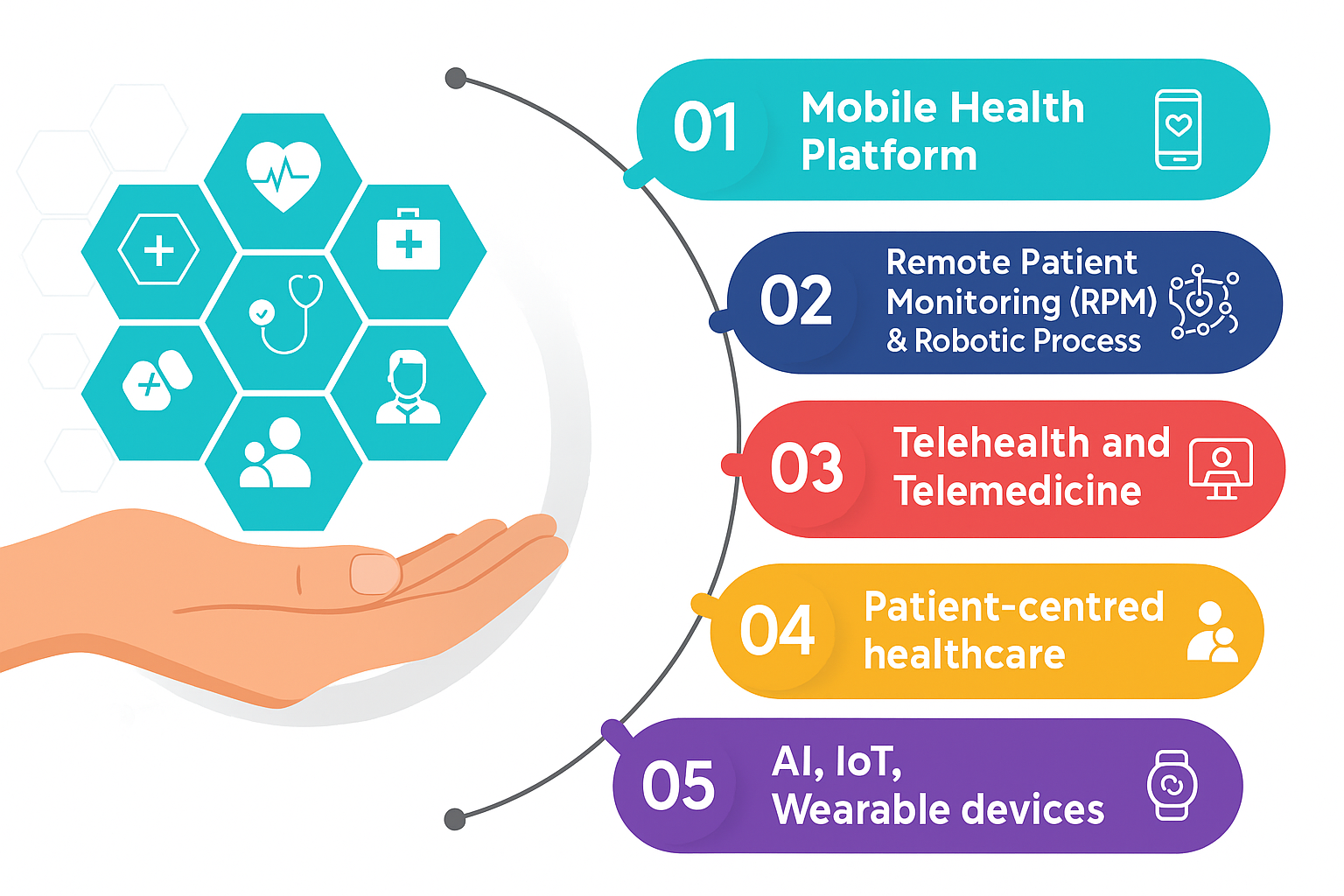· 14 min read
Transforming Healthcare: New York State's 1115 Waiver Program
At the heart of this ambitious initiative lies a recognition that addressing social determinants of health is crucial for achieving better health outcomes and reducing disparities. The waiver lays out a comprehensive strategy to invest in Health Related Social Needs (HRSN) services, such as housing supports, case management, and nutritional assistance, to tackle non-medical factors that profoundly impact individual and community health.

Introduction
In the ever-evolving landscape of healthcare, initiatives that prioritize equity and access to quality services stand out as beacons of progress. New York State’s recent approval of the Section 1115 Waiver amendment by the Center for Medicare and Medicaid Services (CMS) signifies a pivotal moment in healthcare reform. This amendment, submitted in September 2022 and approved on January 9, 2024, sets forth an ambitious agenda aimed at fundamentally transforming the state’s Medicaid program.
The Stakes: Addressing Long-Standing Health Disparities
For too long, certain communities across New York have grappled with persistent health disparities and disengagement from the healthcare system. These inequities, often rooted in social determinants of health, have contributed to poorer health outcomes and a lower quality of life for many Medicaid beneficiaries.
Recognizing the urgency to address these challenges, New York’s 1115 Waiver amendment outlines a bold, multi-pronged strategy to invest in Health Related Social Needs (HRSN) services, improve health equity, integrate care delivery, develop a sustainable healthcare workforce, and foster regionally tailored solutions.
Key Objectives of the Waiver Program
The objectives of the program are clear and far-reaching:
Investing in Health-Related Social Needs (HRSN): The program aims to target social determinants of health through collaboration with Social Care Networks (SCNs) and Medicaid managed care organizations (MCOs).
Improving Quality and Outcomes: By incentivizing safety net providers and integrating care services, New York seeks to enhance the quality of care and health outcomes for vulnerable populations.
Integrating Care Services: Integration of primary care, behavioral health, and HRSN services is a key strategy to improve health equity outcomes, especially for high-risk populations.
Investing in the Workforce: New York is committed to ensuring equitable access to care by investing in its healthcare workforce.
Developing Regional Approaches: Regional strategies and value-based payment programs will foster statewide accountability and improve health outcomes and equity.
Organizational Structure: The establishment of the Health Equity Regional Organization (HERO) and nine regional Social Care Networks (SCNs) forms the backbone of the waiver program. While HERO focuses on administrative activities and data coordination, SCNs provide critical services such as HRSN screenings, referrals, and case management.
HRSN Services: The waiver introduces two tiers of HRSN services: Level 1 for all beneficiaries and Level 2 for those with complex care needs. These services include care coordination and non-medical interventions, such as housing and nutritional support, aimed at addressing the root causes of health disparities.
Additional Program Elements: In addition to HRSN services, the waiver supports various initiatives to strengthen Medicaid services, including support for safety net hospitals, healthcare workforce training programs, federal matching funds for substance use disorder treatment, and continuous Medicaid eligibility for young children.
A Path Forward: Implementation and Impact
As a condition of the waiver approval, New York State must increase certain provider rates by at least two percentage points for the duration of the waiver term, underscoring its commitment to supporting the healthcare workforce and ensuring access to care.
While the road ahead is undoubtedly challenging, New York’s 1115 Waiver amendment represents a bold and unprecedented step toward achieving true health equity for its Medicaid population. By addressing social determinants of health, integrating care delivery, investing in the workforce, and fostering regionally tailored solutions, the state aims to dismantle long-standing barriers and improve health outcomes for all.
As the implementation of this waiver unfolds over the next three years, its impact will be closely watched by stakeholders across the healthcare landscape. For Medicaid beneficiaries in New York, this initiative holds the promise of a more equitable, holistic, and effective healthcare system – one that truly prioritizes their well-being and empowers them to lead healthier lives.
The Role of the Health Equity Regional Organization (HERO)
Established as a pivotal component of New York State’s 1115 Waiver program, the Health Equity Regional Organization (HERO) serves as a central entity responsible for orchestrating regionally focused approaches to reduce health disparities and advance quality and health equity for the overall population.
Core Functions of HERO
- Developing Regionally Focused Approaches: HERO is tasked with developing and implementing strategies tailored to the unique needs of different regions within the state. By understanding the specific health challenges and disparities faced by communities across New York, HERO can design targeted interventions to address these issues effectively.
- Reducing Health Disparities: One of HERO’s primary objectives is to reduce disparities in health outcomes among different demographic groups. By identifying and targeting the root causes of these disparities, HERO aims to create more equitable access to healthcare services and improve health outcomes for all New Yorkers.
- Supporting the Delivery of HRSN Services: While HERO does not directly deliver services, it plays a crucial role in supporting the delivery of Health Related Social Needs (HRSN) services across the state. By coordinating with regional stakeholders and service providers, HERO helps ensure that individuals receive timely access to the support and resources they need to address social determinants of health.
- Data Coordination and Analysis: HERO is responsible for coordinating and analyzing data related to health outcomes, disparities, and the effectiveness of interventions. By leveraging data-driven insights, HERO can identify trends, measure progress, and continuously refine its strategies to achieve optimal results.
- Developing Value-Based Payment Goals: As the waiver progresses, HERO will work to develop and design value-based payment goals that align with the state’s HRSN and health equity priorities. By incentivizing providers to deliver high-quality, equitable care, HERO aims to drive improvements in health outcomes and promote accountability within the healthcare system.
Diverse Stakeholders and Organizations in New York State’s 1115 Waiver Program
New York State’s 1115 Waiver program involves a wide array of stakeholders and organizations collaborating to achieve its ambitious goals of improving healthcare access, quality, and equity. Let’s delve into the diverse entities contributing to the success of this transformative initiative:
1. Centers for Medicare and Medicaid Services (CMS)
As the federal agency overseeing Medicaid programs, CMS plays a pivotal role in approving and monitoring state waiver programs like New York’s. CMS will work closely with the state to ensure compliance with waiver terms and evaluate the program’s impact on health outcomes and costs.
2. New York State Department of Health
The state’s Department of Health will serve as the lead agency responsible for the overall administration and oversight of the waiver program. It will coordinate with other state agencies, manage funding flows, and ensure accountability for achieving the program’s goals.
3. Medicaid Managed Care Organizations (MCOs)
Medicaid Managed Care Organizations play a crucial role in delivering healthcare services to Medicaid beneficiaries. Under the 1115 Waiver program, MCOs are key partners in implementing strategies to improve health outcomes, integrate care services, and address social determinants of health.
Existing Medicaid MCOs will partner with SCNs to incorporate HRSN services into their care delivery models. This collaboration will be crucial for ensuring seamless integration and coordination of medical and non-medical services for Medicaid beneficiaries.
4. Health Equity Regional Organization (HERO)
As the statewide entity driving regionally focused approaches, the HERO will play a central role in coordinating data, assessing outcomes, and designing value-based payment models to support health equity and HRSN initiatives.
As highlighted earlier, HERO serves as a central entity responsible for developing regionally focused approaches to reduce health disparities and advance health equity across New York State. HERO coordinates with various stakeholders to design and implement targeted interventions that address the unique needs of different communities.
5. Social Care Networks (SCNs)
Social Care Networks play a vital role in providing Health Related Social Needs (HRSN) screenings, referrals, and case management services to Medicaid beneficiaries. These networks collaborate with MCOs and other providers to ensure that individuals receive comprehensive support to address social determinants of health.
The nine regional SCNs will be instrumental in delivering HRSN services to Medicaid beneficiaries. They will provide screenings, referrals, case management, and develop provider networks for HRSN service delivery, contracting with existing Medicaid managed care organizations (MCOs) to integrate these services into the healthcare delivery system.
6. Safety Net Providers
Safety Net Providers, including community health centers, clinics, and hospitals, serve populations with limited access to healthcare services. The 1115 Waiver program incentivizes safety net providers to improve care quality and outcomes for underserved communities, particularly those facing health disparities.
7. Workforce Development Programs
Workforce development programs are instrumental in addressing workforce shortages and ensuring equitable access to care. The waiver program includes initiatives to provide job training, career pathways, and student loan repayment assistance to healthcare professionals, strengthening the workforce and enhancing access to care in underserved areas.
8. State and Local Government Agencies
State and local government agencies play a crucial role in implementing and overseeing the waiver program. These agencies collaborate with CMS, healthcare providers, community organizations, and other stakeholders to ensure effective program implementation, compliance with regulatory requirements, and accountability in healthcare delivery.
9. Community-Based Organizations (CBOs)
Community-Based Organizations play a vital role in addressing social determinants of health and promoting community engagement. These organizations collaborate with healthcare providers and stakeholders to identify and address the underlying social, economic, and environmental factors that impact health outcomes.
10. Advocacy Groups and Community Organizations
Advocacy groups and community organizations representing Medicaid beneficiaries and underserved populations will play a vital role in shaping the program’s implementation
11. Healthcare Providers
From hospitals and clinics to community-based organizations and social service agencies, a diverse range of healthcare providers will be instrumental in delivering HRSN services and addressing the social determinants of health for Medicaid beneficiaries.
By fostering collaboration among these diverse stakeholders, New York aims to create a comprehensive and coordinated approach to achieving health equity, addressing social determinants of health, and improving outcomes for its Medicaid population.
Timeline and Main Goals of New York State’s 1115 Waiver Program
Timeline:
- September 2, 2022: New York State submits the Section 1115 Waiver amendment proposal to the Center for Medicare and Medicaid Services (CMS).
- January 9, 2024: CMS approves New York’s Section 1115 Waiver amendment, marking the official start of the program.
- January 9, 2024 through March 31, 2027: The approved waiver amendment is effective for a term of three years, during which New York State aims to implement and achieve the program’s objectives.
Main Goals:
The 1115 Waiver program of New York State is designed to fundamentally reform the delivery of healthcare services through its Medicaid program. The main goals of the program include:
1. Investing in Health-Related Social Needs (HRSN)
The waiver program seeks to address social determinants of health by investing in HRSN services, such as housing supports, case management, and nutritional assistance. These services will be delivered through a network of Social Care Networks (SCNs) in partnership with existing Medicaid managed care organizations (MCOs).
2. Improving Health Equity and Addressing Disparities
A central goal of the waiver is to reduce long-standing health disparities and improve health outcomes for communities that have historically faced disengagement from the healthcare system. The newly established Health Equity Regional Organization (HERO) will play a pivotal role in developing regionally focused approaches to advance health equity.
3. Integrating Primary Care, Behavioral Health, and HRSN Services
The program aims to foster better integration of primary care, behavioral health services, and HRSN services to provide more holistic, coordinated care for high-risk Medicaid beneficiaries, including children and youth, pregnant and postpartum individuals, the chronically homeless, and those with serious mental illness or substance use disorders.
4. Investing in the Healthcare Workforce
Recognizing the importance of a robust healthcare workforce, the waiver includes initiatives to encourage participation in healthcare fields facing shortages, such as job training programs and student loan repayment incentives.
5. Developing Regionally Tailored Approaches and Value-Based Payment Models
The waiver seeks to promote regionally focused solutions and value-based payment models that align with the state’s health equity priorities, fostering accountability and incentivizing improved health outcomes and cost-effectiveness.
By pursuing these ambitious goals over the three-year waiver term, New York aims to transform its Medicaid program into a model of healthcare delivery that prioritizes health equity, addresses social determinants of health, and empowers Medicaid beneficiaries to lead healthier, more fulfilling lives.
The Programmatic Elements Specific to the Approved Waiver Only
In the context of New York State’s approved 1115 Waiver, several programmatic elements are specific to the approved waiver only. These elements represent innovative strategies and initiatives aimed at addressing the unique healthcare needs of Medicaid beneficiaries in the state. Some of these specific programmatic elements include:
1. Health Equity Regional Organization (HERO)
- The establishment of the Health Equity Regional Organization (HERO) is a key programmatic element specific to the approved waiver. HERO serves as a centralized entity responsible for developing regionally focused approaches to reduce health disparities, advance quality and health equity, and support the delivery of Health Related Social Needs (HRSN) services.
2. Social Care Networks (SCNs)
- The approved waiver includes the creation of Social Care Networks (SCNs) as part of the infrastructure for delivering HRSN services. SCNs are responsible for providing HRSN screenings, referrals, and case management for Medicaid beneficiaries, as well as developing networks of providers to support HRSN service delivery.
3. Two-Tiered HRSN Service Delivery
- The approved waiver introduces a two-tiered approach to HRSN service delivery, with Level 1 services available to all beneficiaries and Level 2 services reserved for those with complex care needs. This tiered approach ensures that individuals receive appropriate levels of support based on their specific health and social needs.
4. Leveraging Existing CMS Programs
- The approved waiver allows for the leveraging of existing CMS programs, such as the AHEAD program, to provide additional support for safety net hospitals. By leveraging federal resources and partnerships, New York State can enhance the capacity of safety net providers to deliver high-quality care to underserved populations
5. Federal Matching Funds for Substance Use Disorder Treatment
- The approved waiver includes provisions for offering federal matching funds for Medicaid services provided to individuals with substance use disorder who reside in an Institution for Mental Disease (IMD). This initiative aims to expand access to substance use disorder treatment services and support recovery efforts among affected individuals.
6. Continuous Medicaid Eligibility for Children Up to Age Six
- The approved waiver includes a provision for continuous Medicaid eligibility for children up to age six. Ensuring continuous coverage for young children helps promote early access to preventive care, screenings, and interventions, which can have long-term benefits for their health and well-being.
These programmatic elements specific to the approved waiver reflect a comprehensive approach to addressing health disparities, improving care coordination, and enhancing healthcare delivery for Medicaid beneficiaries in New York State. Through strategic investments and innovative partnerships, the state aims to create a more equitable and responsive healthcare system that meets the diverse needs of its population.
The Programmatic Elements Specific to the Proposed Waiver Only
In the context of New York State’s proposed 1115 Waiver, several programmatic elements were outlined that were specific to the proposed waiver only. While the specifics of the proposed elements may vary depending on the initial submission, here are some programmatic elements that might have been specific to the proposed waiver:
1. Initial Organizational Structures and Funding Mechanisms
- The proposed waiver may have outlined initial organizational structures and funding mechanisms for implementing various components of the waiver program. These structures could include the allocation of funds to support workforce development, care coordination efforts, and the establishment of new programs or initiatives.
2. Preliminary Service Delivery Models
- The proposed waiver may have included preliminary service delivery models for addressing health disparities, improving care quality, and promoting health equity among Medicaid beneficiaries. These models could have outlined strategies for integrating primary care, behavioral health, and social services to better meet the needs of vulnerable populations.
3. Targeted Interventions for Specific Communities
- The proposed waiver might have included targeted interventions or initiatives aimed at addressing the unique healthcare needs of specific communities or demographic groups. These interventions could have focused on reducing disparities in access to care, improving health outcomes, and promoting wellness among underserved populations.
4. Innovative Approaches to Healthcare Delivery
- The proposed waiver may have introduced innovative approaches to healthcare delivery, such as telehealth services, mobile clinics, or community-based health programs. These approaches could have been designed to expand access to care, improve care coordination, and enhance the overall patient experience.
5. Partnerships with Community-Based Organizations
- The proposed waiver might have emphasized partnerships with community-based organizations (CBOs) to support the delivery of health and social services to Medicaid beneficiaries. These partnerships could have included initiatives to strengthen the capacity of CBOs, promote community engagement, and address social determinants of health.
6. Strategies for Addressing Social Determinants of Health
- The proposed waiver may have included specific strategies or programs for addressing social determinants of health, such as housing instability, food insecurity, or transportation barriers. These strategies could have been designed to complement existing healthcare services and improve health outcomes for Medicaid beneficiaries.




